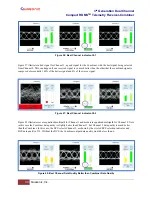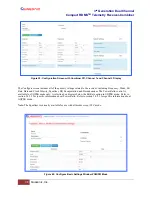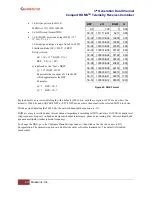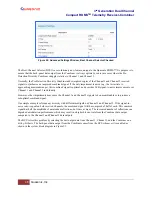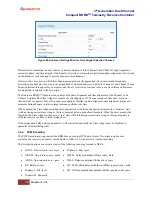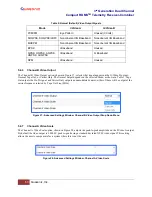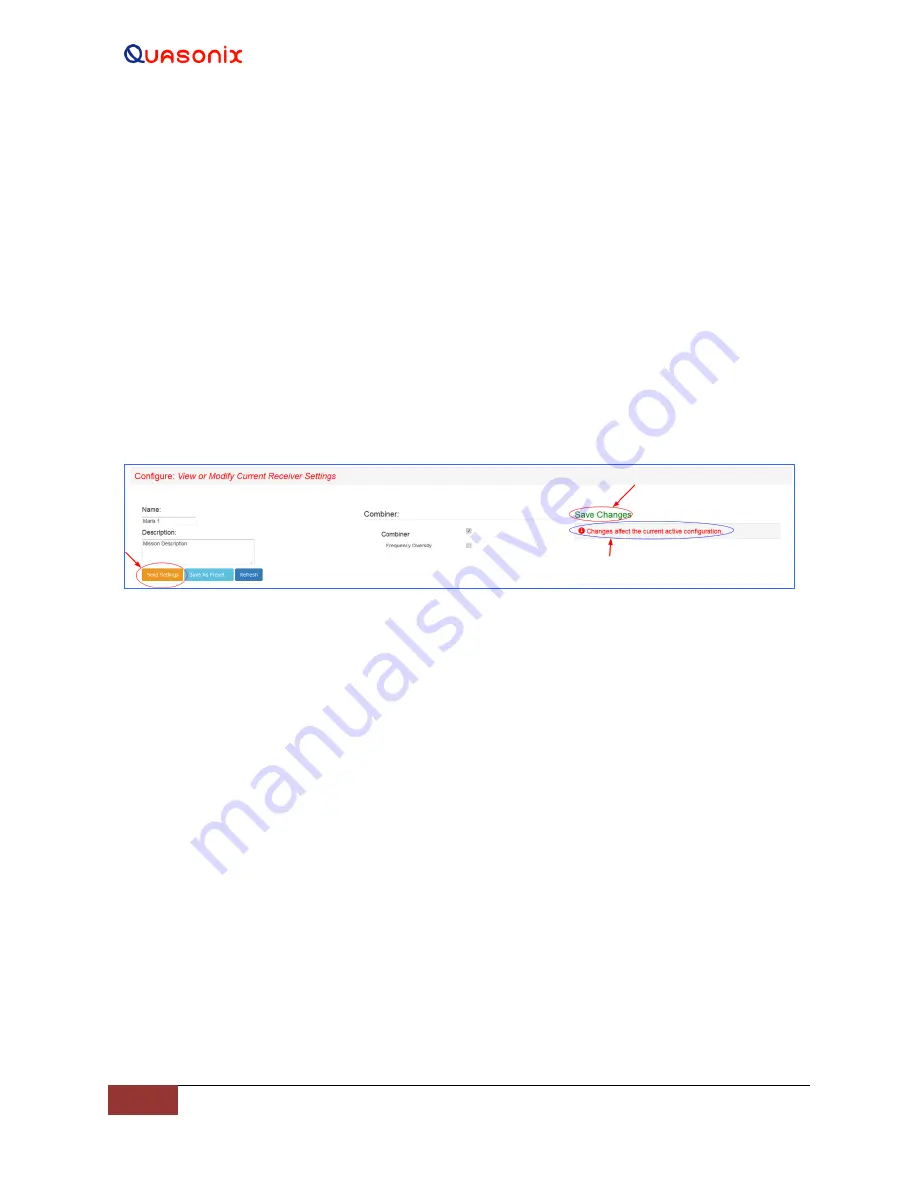
3
rd
Generation Dual Channel
Compact RDMS
TM
Telemetry Receiver-Combiner
37
Quasonix, Inc.
The settings can be adjusted by clicking on a check box (to enable or disable an option), clicking on a drop down
menu and making a selection, or, in the case of Frequency and Bit Rate, typing the number directly or using
up/down scroll arrows to select the desired value.
To save the current configuration as a preset, click on the Save as a Preset button, or click on the Refresh button to
refresh the settings without saving. To create or modify other presets, use the Browser Interface Presets screen.
When selecting new settings on the Browser Interface Configure screen, these settings are not sent to the receiver
and activated until the user clicks on the Save Presets button.
New options are provided to the user when certain
options are selected
, for example, Frequency Diversity and Time Aligner are only available after Combiner is
enabled
and saved
. Then other options may be changed
and saved
.
The Browser Interface alerts the user whenever a Save or Refresh is required. When a Save is necessary, the Send
Settings button changes color (from green to gold), and a Save Changes message displays in the message area on the
right side of the screen, as shown in Figure 41. Other notifications display in red text on the right side.
Figure 41: Configure Screen, Messages and Alerts
5.4.2.1
Power Ratio (UQPSK Mode Only)
To properly distinguish the in-phase (I) component from the quadrature-phase (Q) component in a modulated
UQPSK signal, the demodulator requires knowledge of the ratio of power between the two components. This degree
of unbalance is specified in dB.
For example, if the I component has four (4) times the power of the Q component, the power ratio will be
10*log10(4/1) = 6 dB. If the I component has lower power than the Q component, this setting will be negative. For
example, if the I component has 1/5 the power of the Q component, the power ratio will be 10*log10(1/5) = -7 dB.
Note that small power ratios, between -3 dB and +3 dB, may be difficult for the demodulator to reliably distinguish.
5.4.2.2
AQPSK Mode
AQPSK mode results in two independent bit streams out of the RDMS. The I data is available on the normal clock
and data outputs, but the Q data is only available on an MDM connector. Refer to Table 4 for connector/pin
information for I data outputs (Clock A and Data A) and Q data outputs (Clock B and Data B). When AQPSK mode
is selected, the Configure Basic Settings Window shows two bit rates (Bit Rate and Bit Rate B), as shown in Figure
42.








